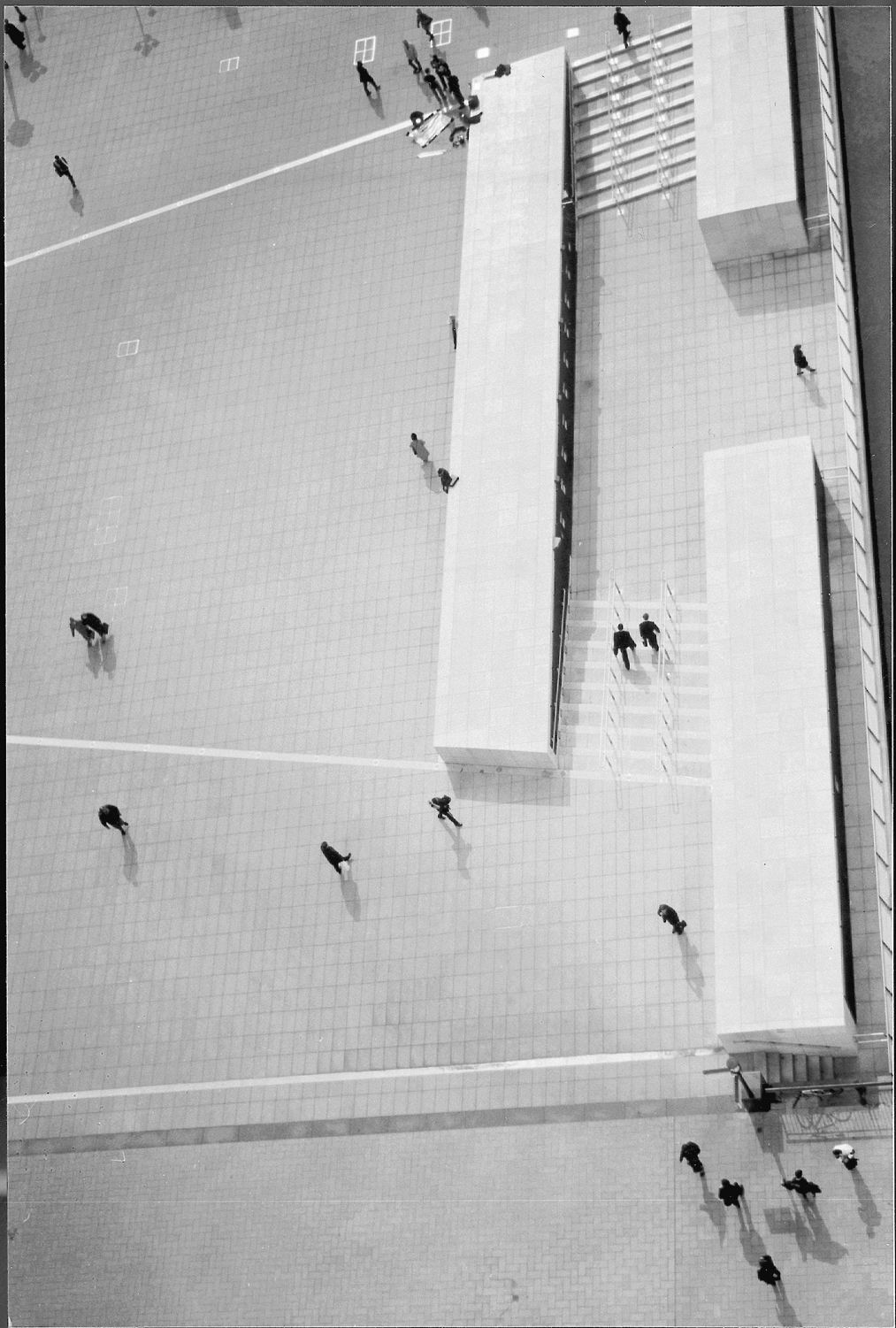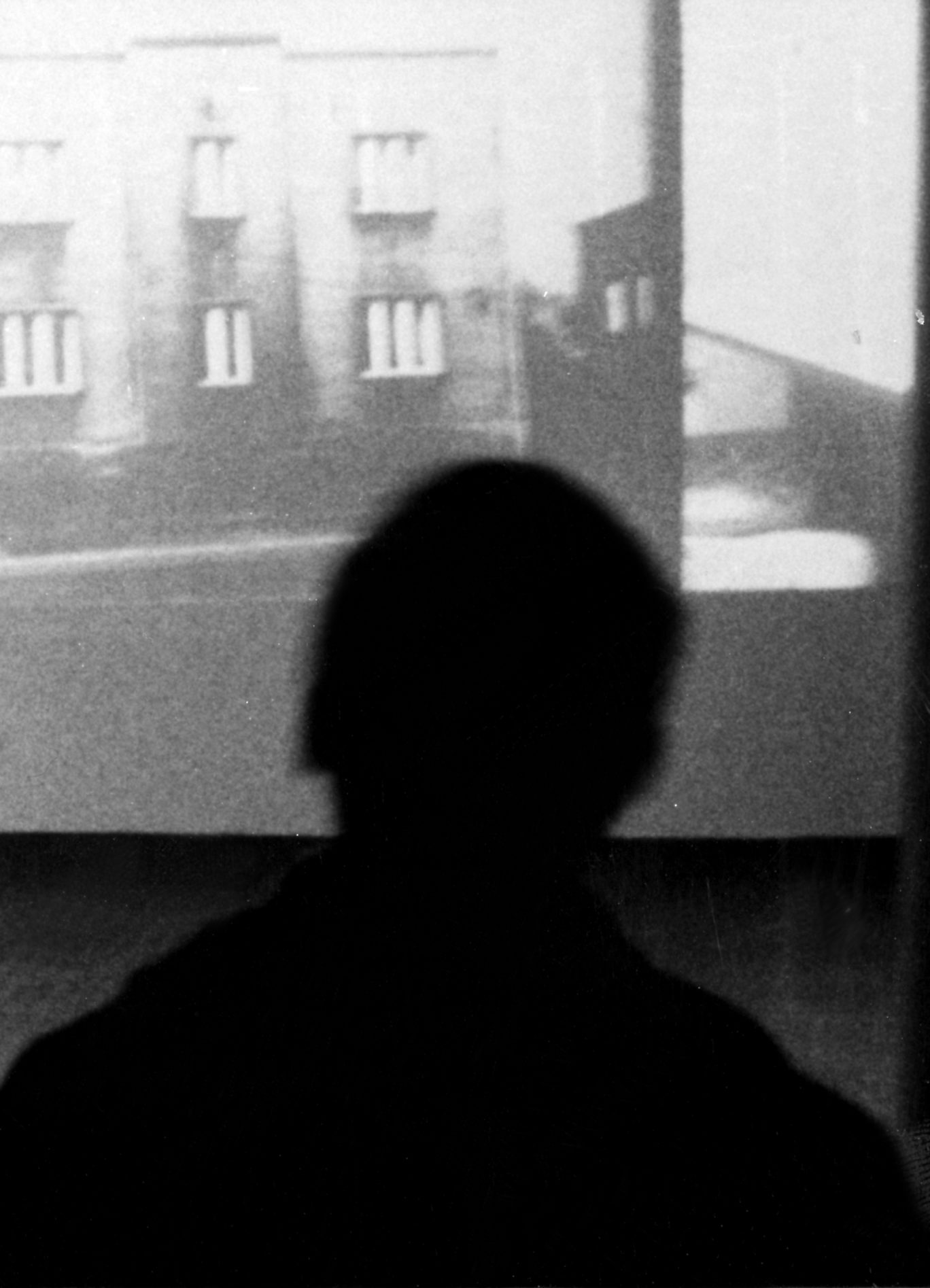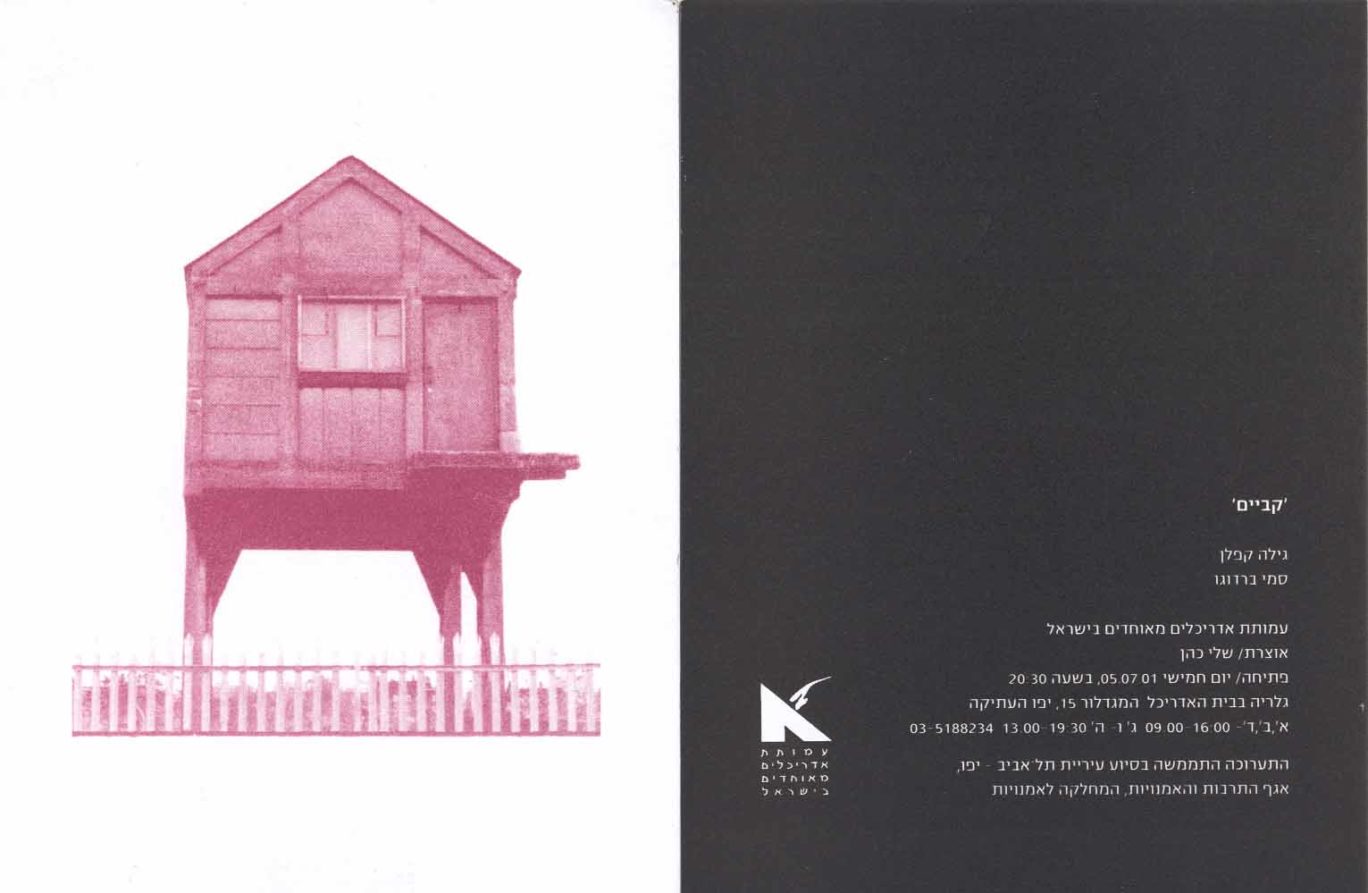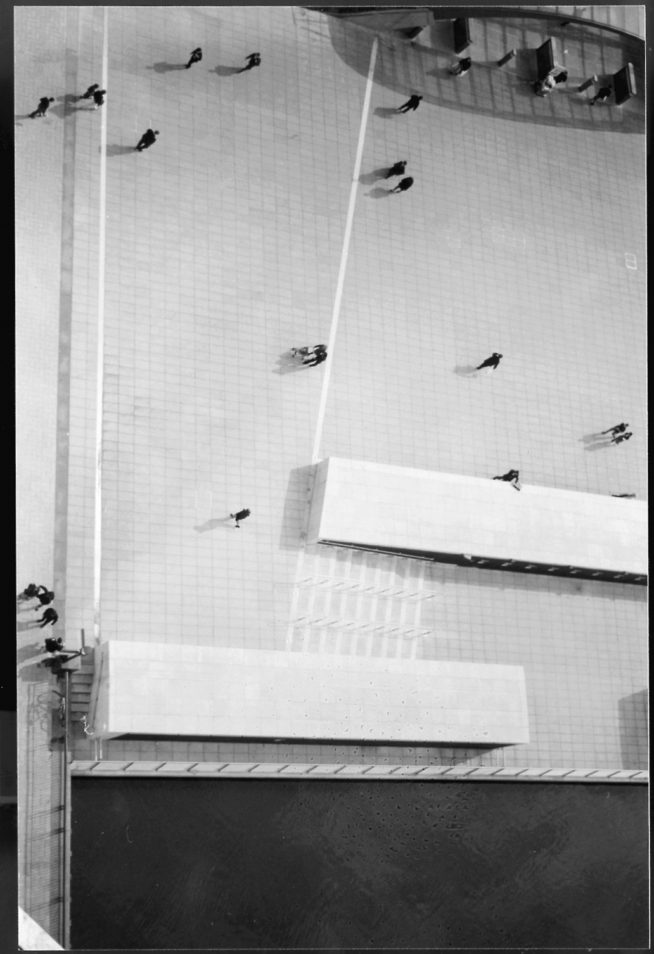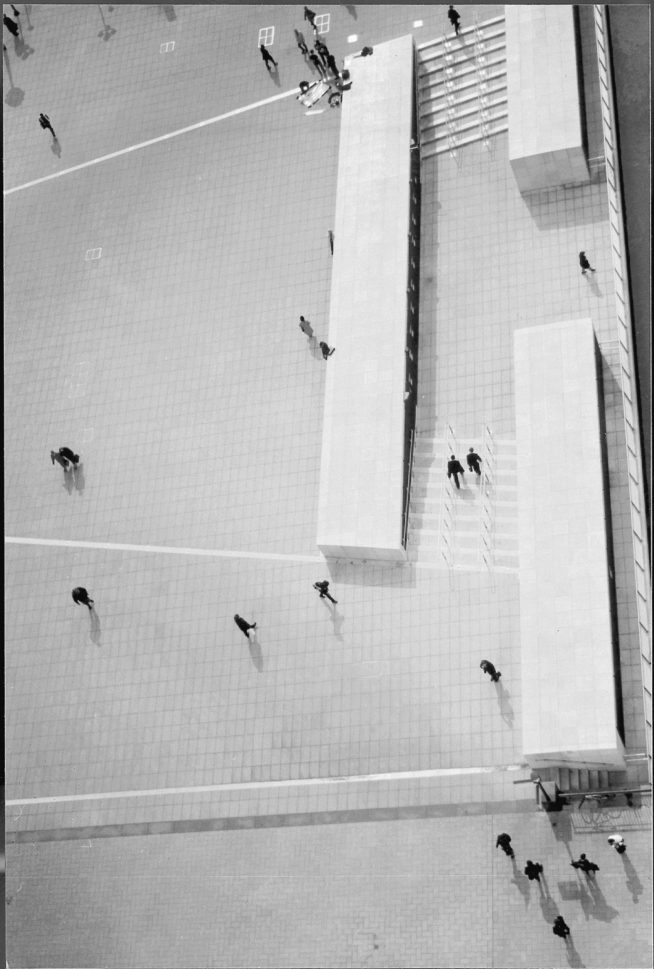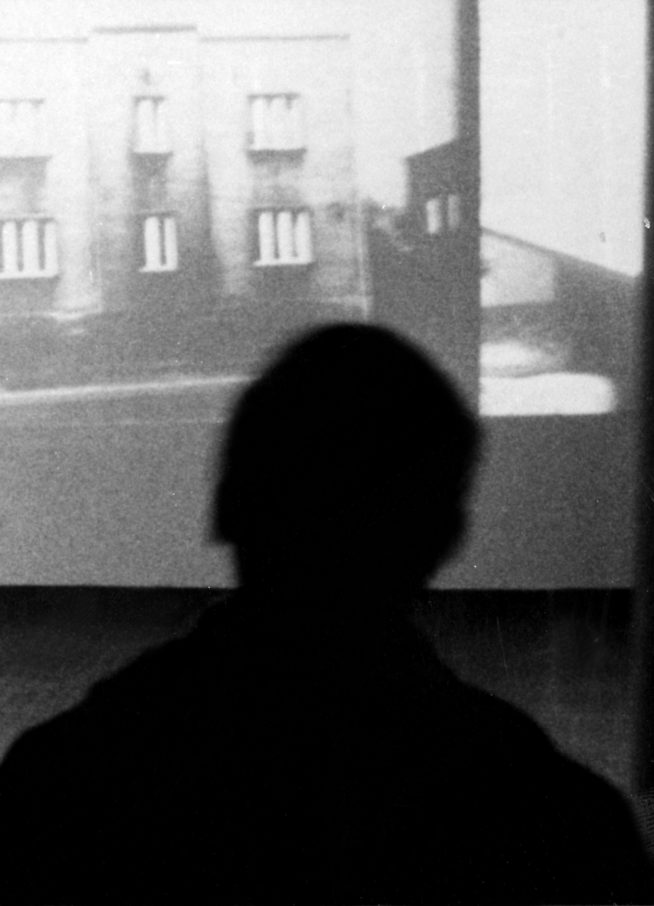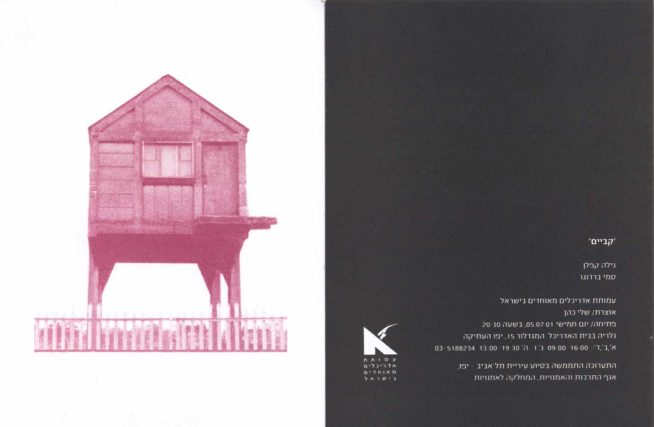The exhibition “Stilts” mirrors progression in an urban space, illustrating the perpetual dialogue between the individual and his surroundings. It recounts several stories of urban wandering through space and time. Each story centers on an urban figure whose flow of thoughts corresponds with the geographical-visual trajectory s/he covers in London. The textual and visual routes run parallel and intersect intermittently.
The project began with a correspondence between artist Gila Kaplan and writer Sami Berdugo.(1) It continued with an attempt to create a synthesis between the visual-photographic dimension and the textual-literary dimension, so that both artists and both media could serve one another, and make for a different reading of both text and image. The shared work would not have been made possible without the willingness of each artist to allow a peek into the other’s world.
The exhibition features a series of books which were adapted to presentation and installation in the gallery’s space.(2) The wandering described in the stories differs from that of the modern wanderer, the 19th-century flâneur, the bohemian or the dandy, the artist or the idler, strolling aimlessly in the big city’s streets, drawing aesthetic pleasure from observation of the bustling crowd. The wanderers populating the urban plot presented in the exhibition are anonymous marginal figures: employees of the big offices and retailer stores, and residents of the small apartments which make up the urban sequence, and whose wandering is fragmented: they prefer the suspension of movement and the limited point of viewer over the dynamism usually attributed to the modern metropolis, because it is rather staticity, limitation, and reduction that infuse them with the illusion of spatial control. It is this state of mind that gave the exhibition its title, “Stilts.”
The image of the house on crutches/stilts—the guard’s post overlooking the rail traffic—opens the exhibition, transforming into a physical presence looking toward the city. The other images in the exhibition also serve as illustration for the protagonists, whether sites on their walking or suspension route, or places they observed. The characters described in the stories are thus present in the exhibition not in body but through their gazes at the city.
The protagonists of the stories in “Stilts” dwell within themselves, so to speak—each figure is imprisoned in its psycho-geographic space, and its emergence from the private into the public sphere is partial. As aforesaid, the exhibition illustrates the dialogue of the individual and the private space surrounding him, with the public space. Thus, for example, photographs of the city square are juxtaposed with a photograph depicting the domestic sofa on which the protagonist of the story “Gentle Queen” sits, his thoughts wandering in the daily route between his home and the little photography shop where he works.
The story “Local” presents a polyphony of passersby chancing into London’s Canary Wharf against the backdrop of photographs from the square. Like the other stories in the exhibition, its presentation obeys a clear, formal principle: it is the overview that shapes the work. Kaplan photographed the square from the top of a tower in an abstract manner which presents it as an architectural model or plan. She deconstructed the square image into thirty-one partial photographs which she reconstructed based on a syntax determined by the order of photography. The photographs freeze the progression of life in the square for seven consecutive minutes, but the mechanical fragmentation of the photograph, as well as the wall/square’s paving with repeated units accelerate the pace of human movement in situ. The overview unfolds vertically on a wall in the gallery, recreating the public space within the exhibition space as fragmented and obsessive.
The work Local expands interpretation of the visible space to the psychological and human field. Devoid of any human distinction, the passersby become an assembly of dots in space, while their personal voice is revealed in their thoughts, which were in fact written by Berdugo, printed and hung on the wall next to the photograph of the square. The stream of consciousness fragments provide a peek into worlds of thought existing side by side, reflecting a range of human possibilities: from the private and petty bothered with self-criticism, with the body, with interpersonal relations, work and livelihood, to the liberated and skeptical, deliberating over questions of popular culture and language, social and political phenomena.
Kaplan’s 28-70mm 1:35-4/8 MD ZOOM is the conceptual basis for the series of stories. It depicts architectural spaces according to neither the contour of their physical borders, or the plans of the presented structures, but rather the human reference to them. The space is generated by a web of gazes amongst people, and between these people and the objects in the space. The work presents human motion in various loci in London: hairdressing salon, subterranean tunnel, supermarket, school cafeteria, train, and bus station. The depicted spaces are transparent, active, resilient and changing according to the human assembly populating them. Although the depicted figures stood at varying distances from the camera, the size of the images in the work is similar, and therefore the location of the photographed subjects may be identified by the changing sharpness of the images.
The dynamic nature of human crowding in space is translated in the gallery into stacks of human images on which the audience is invited to act: to take an image—man-takes-man, as it were—until none is left.
- Sami Berdugo’s novels include: Black Girl (Tel Aviv: Babel, 1999); And Say It to the Wind: A Novel (Tel Aviv: Hasifriya Hahadasha, 2002); Orphans (Tel Aviv: Hasifriya Hahadasha, 2006) [all in Hebrew].
- The book series was created as part of the Department of Communication Art & Design, Royal College of Art, London, 2000.

